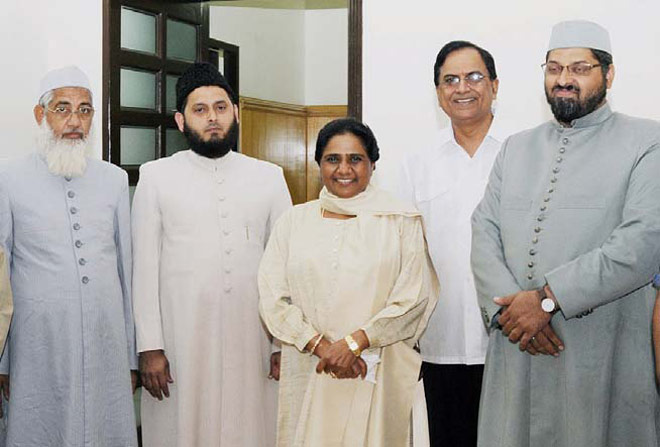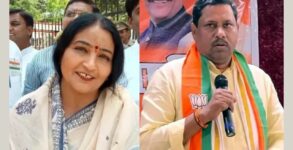Mayawati, who won in Uttar Pradesh riding high on an unprecedented Brahmin-Dalit alliance in 2007, seems to have found a new top-up to her conventional SC vote bank. Sources close to BSP supremo tells Newsd that the party has finalized as many as 138 Muslim candidates across the state.
A Dalit-Muslim consolidation potentially is far more formidable than a Brahmin-Dalit alliance. Away from the glare of national media, the cadre network of BSP was asked to strategically add strong local Muslim influencers as early as beginning of 2015. Scheduled castes and Muslims together form about 39-40 percent of UP’s demography. Both these groups vote in large numbers. Till recently, BSP was only the third alternative for the Muslims in the state who have conventionally voted for the Samajwadi Party and selectively for the Congress.
BSP still has in its hold some tall Brahmin faces but the party has realized that there are too many takers for the approximately 12 percent Brahmin votes.
Post-2014, political pundits have been saying that BJP has become default option for Brahmin pan-India. Recently, with Congress projecting Sheila Dikshit as its chief ministerial candidate, there is a possibility that a significant chunk of Brahmin votes may shift to Congress. What is notable is the plank that Congress’s propaganda machinery is subtly playing on — that UP has not had a Brahmin Chief Minister in over three decades.
Behenji has never hidden the fact that she plays big on the identity card in politics. In the 90s, BSP consolidated a big majority of scheduled caste voters under the slogan “Tilak, tarazu aur talwar, inko maro joote char” where ’tilak’ symbolized Brahmins, ‘taraju’ symbolized Vaishyas, another big chunk in UP and ‘talwar’ symbolized Thakurs. While this slogan did consolidate scheduled castes and a large chunk of most backward castes, it never gave Mayawati enough seats to form the government on her own. It is in this backdrop that she realized the need for a substantial top-up. She roped in Satish Mishra, a lawyer commanding huge respect among UP Brahmins, and sent him to the Rajya Sabha. Incidentally, Mishra’s biggest client was Mulayam Singh Yadav.
Under Satish Mishra, BSP started mobilizing Brahmin groups at the grass route level. By 2006, the slogan changed to “Haathi nahi Ganesh hai, Bramha Vishnu Mahesh hai” . In her effort to woo Brahmins, BSP had fielded 100 candidates in her 2007 assembly elections. This led to a political party winning an absolute majority in UP after a gap of 15 years.
During the five years of Mayawati rule, Brahmins started feeling disenchanted and by 2012 moved away and did not vote for any political party in consolidation. The moving away of Brahmin votes and a large consolidation of Muslims, Thakurs and Yadavs and some non-Yadav OBC groups helped SP win a convenient majority in 2012.
















